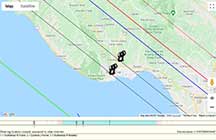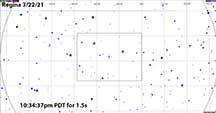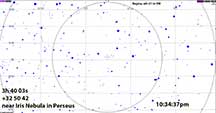


New Gaia data has refined this orbit and the path has high rank. Santa Cruz is just inside the northern limit. Karl, on Highland, is an almost certain miss. The altitude is only 21 degrees in the NW, in southern Perseus above the Plieades, very close to the Iris Nebula. The star does a full drop for only 1.54 sec
 |
 |
 |
Good success. I got a 0.80 sec event from Mill St near DeLaveaga's parking lot off Branciforte, and Kirk got it from home. We both had our ZR45mc camcorders record properly - nice!
PyOTE Reductions